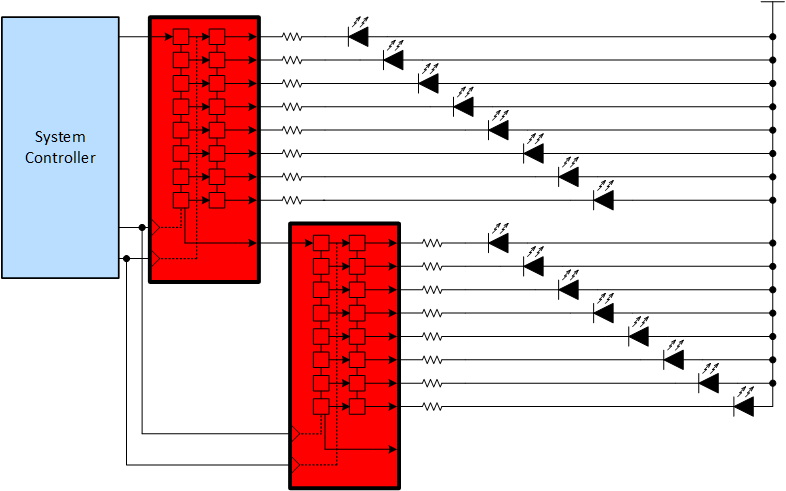SCLA037 October 2020 SN74HC595B , SN74HCS595 , SN74HCS595-Q1
Microcontrollers often have a very limited number of GPIO pins. Serial-in parallel-out shift registers can be used to output to a large number devices while only utilizing a few GPIO pins from the controller.

See more about this use case in the Logic Minute video Increase the Number of Outputs on a Microcontroller.